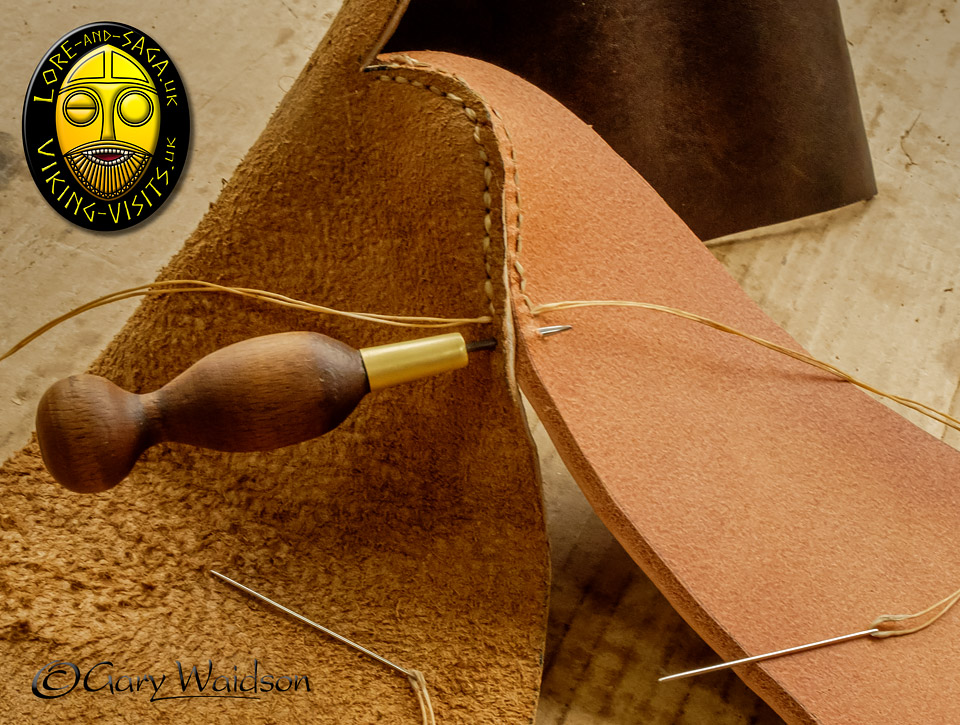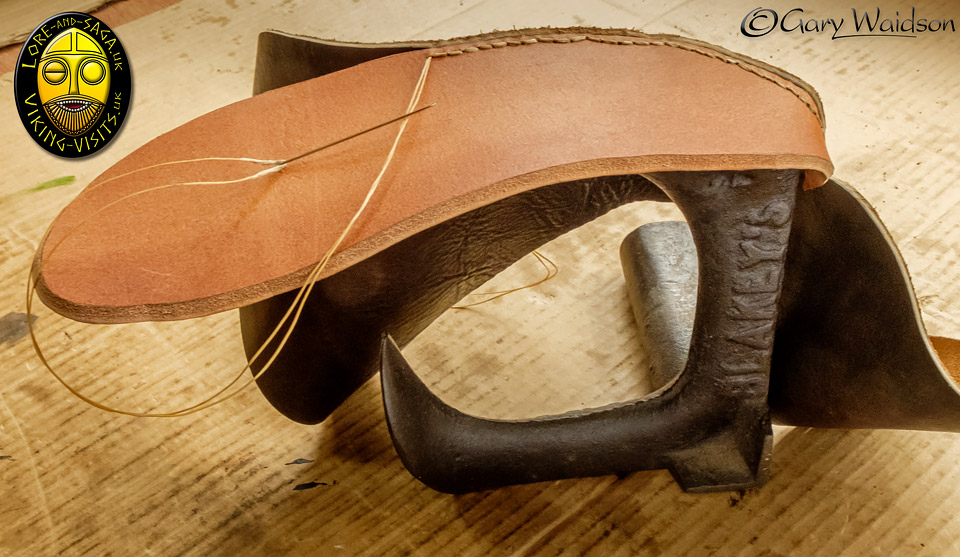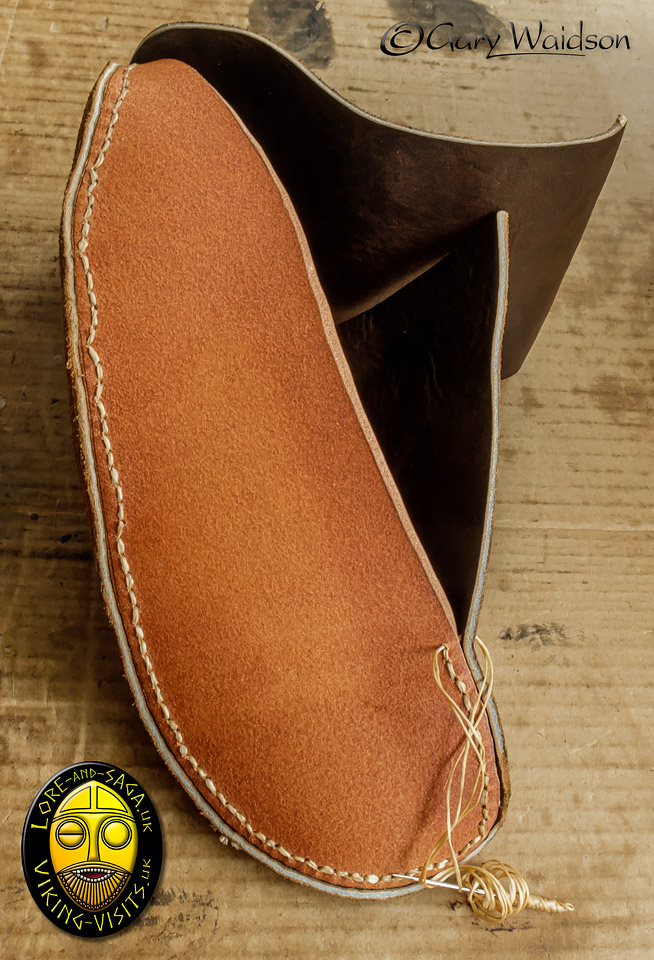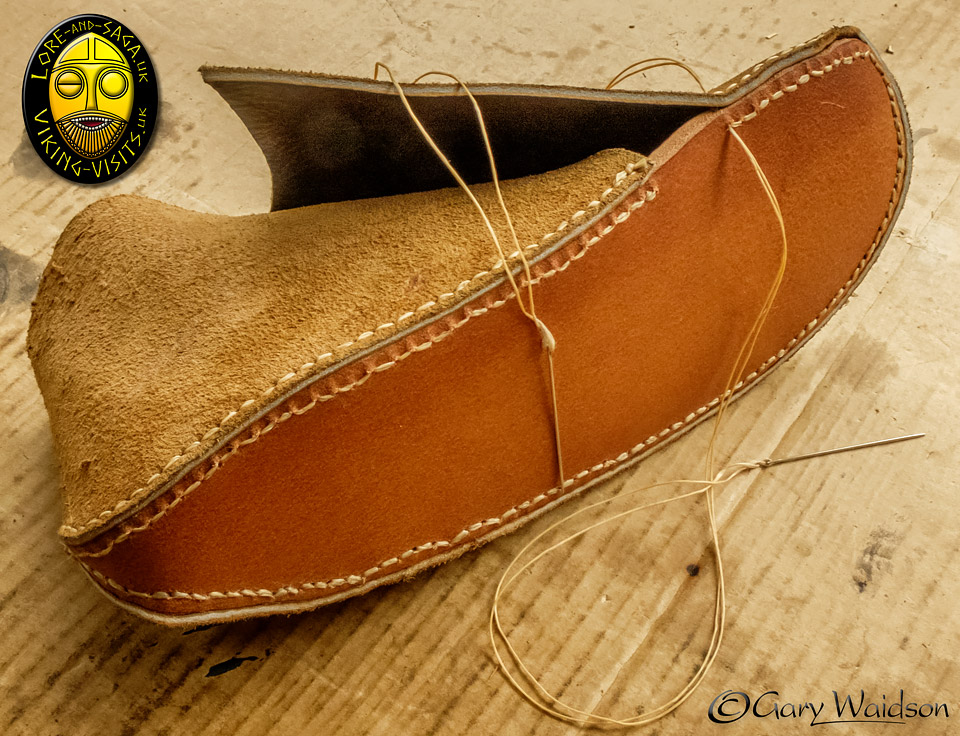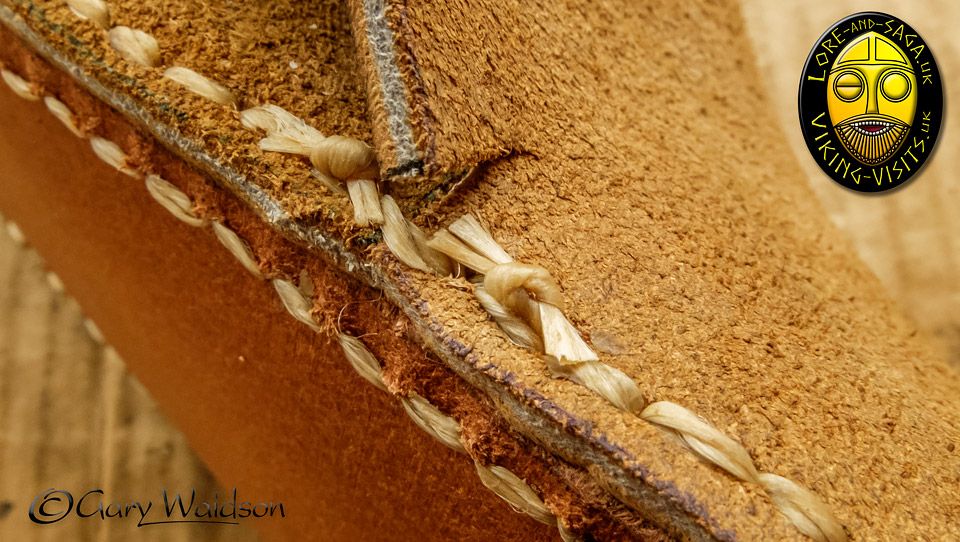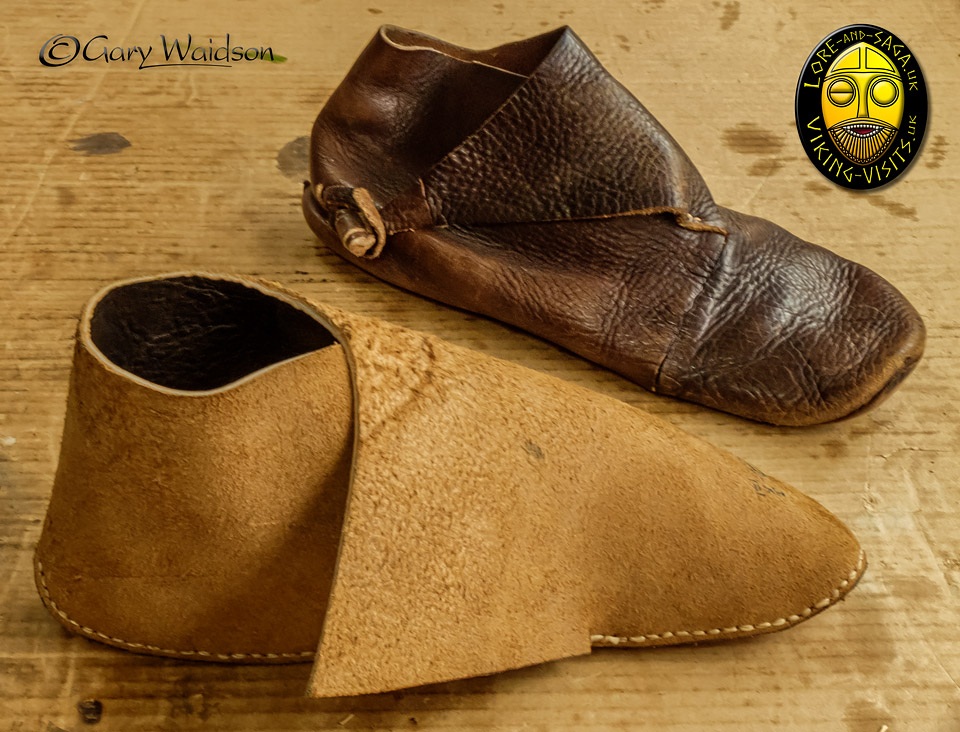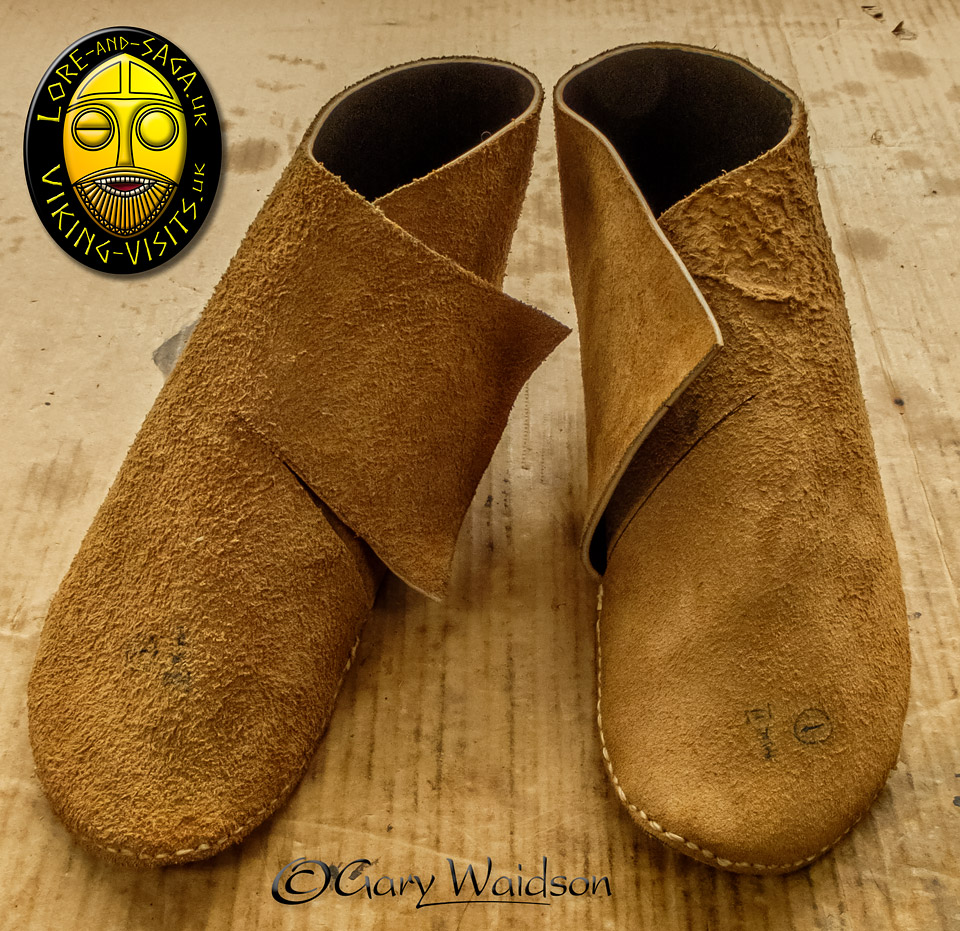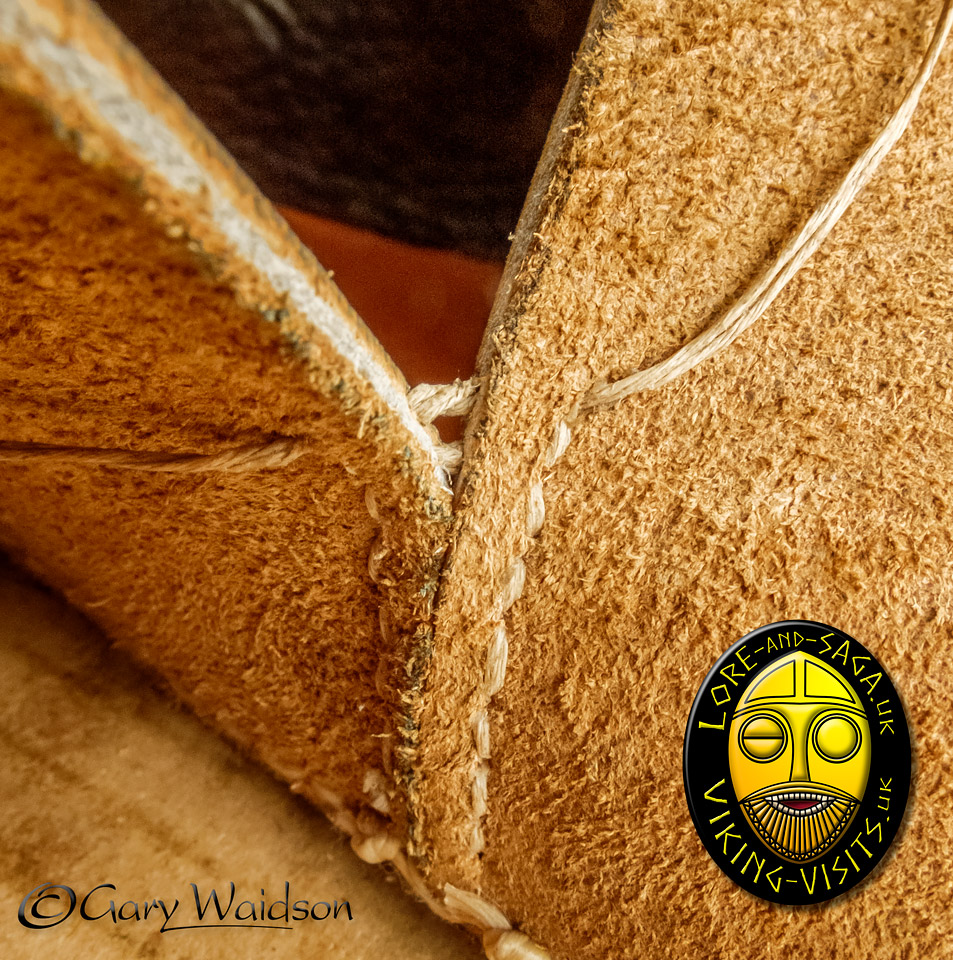Time for some new shoes.
Of course being me that would not mean anything as simple as a visit to the shoe shops.
It's time for a new pair of Viking shoes.
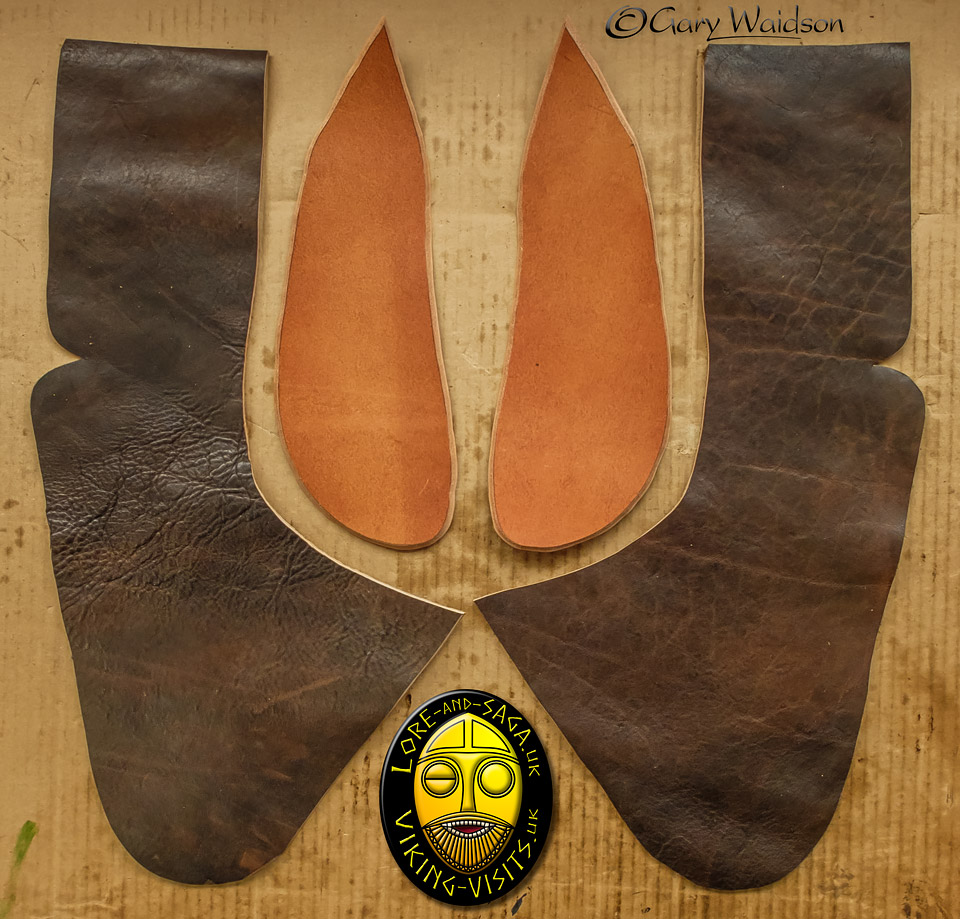
This is the start point of my pattern. ( Mk. II )
It's not the final pattern because it will be adapted and trimmed to fit as I progress but this template has worked for the last half dozen pairs I've made so I don't muck about with it now.
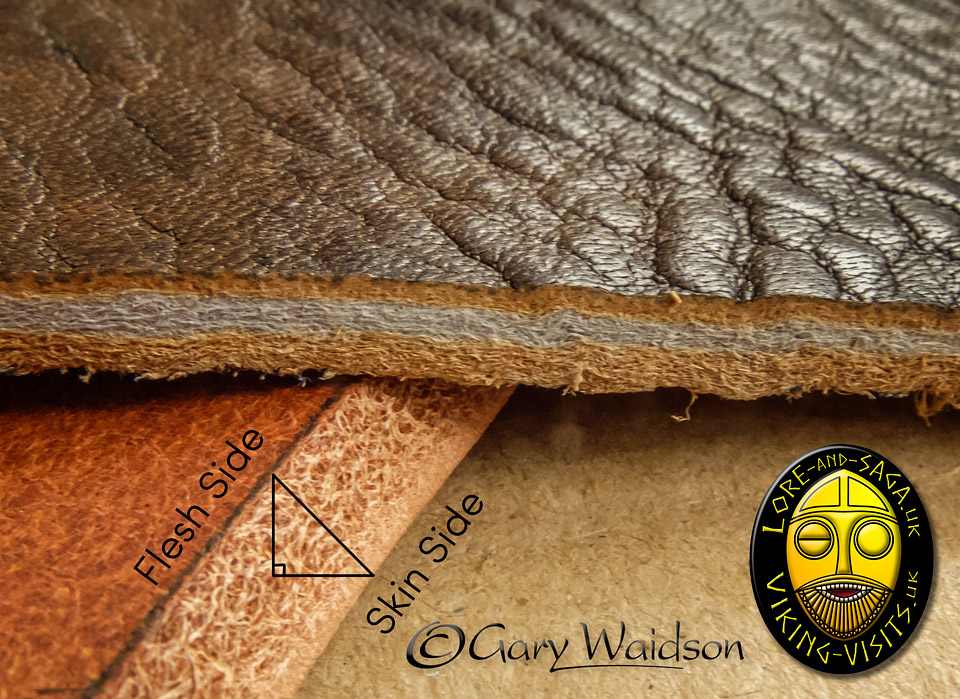
A few details that will not be apparent when the shoes are completed.
First of all the leather for the tops is not "authentic" I use a tough hard wearing leather that is chrome tanned because I am wearing them almost continuously when I am working and I don't have time to sit making new shoes all the time so I need them to last a couple of years at least.
The end result looks the part so that is the most important thing.
Secondly, the sole is much thicker than the originals for the same reason given above. The sole is always the first part of the shoe to wear out, especially as I'm walking on surfaces like concrete and tarmac that the original shoes did not have to compete with.
In my early shoes, the stitching was usually the first thing to fail. To counter that I now use rot proof synthetic sinew and I cut the edge of the sole with an outward angle, wider on the outer skin side so that the leather covers the seam better when the shoe is turned inside out.
None of these compromises to authenticity will be apparent in the finished product but they do ensure that I get an extended working life out of the shoes.
Of course being me that would not mean anything as simple as a visit to the shoe shops.
It's time for a new pair of Viking shoes.

This is the start point of my pattern. ( Mk. II )
It's not the final pattern because it will be adapted and trimmed to fit as I progress but this template has worked for the last half dozen pairs I've made so I don't muck about with it now.

A few details that will not be apparent when the shoes are completed.
First of all the leather for the tops is not "authentic" I use a tough hard wearing leather that is chrome tanned because I am wearing them almost continuously when I am working and I don't have time to sit making new shoes all the time so I need them to last a couple of years at least.
The end result looks the part so that is the most important thing.
Secondly, the sole is much thicker than the originals for the same reason given above. The sole is always the first part of the shoe to wear out, especially as I'm walking on surfaces like concrete and tarmac that the original shoes did not have to compete with.
In my early shoes, the stitching was usually the first thing to fail. To counter that I now use rot proof synthetic sinew and I cut the edge of the sole with an outward angle, wider on the outer skin side so that the leather covers the seam better when the shoe is turned inside out.
None of these compromises to authenticity will be apparent in the finished product but they do ensure that I get an extended working life out of the shoes.
Last edited:

